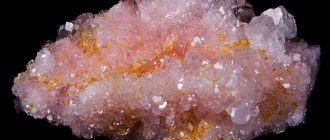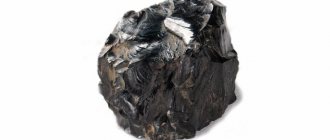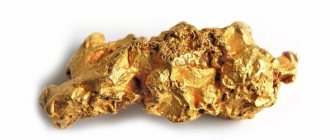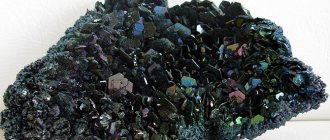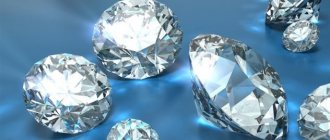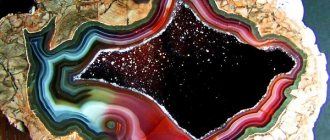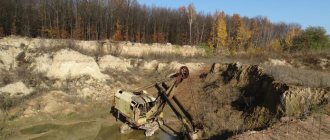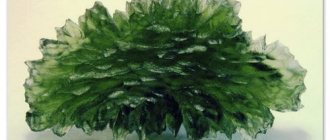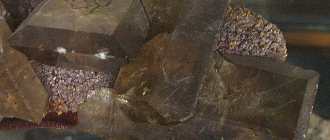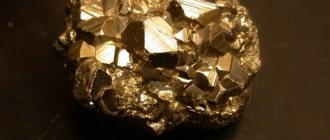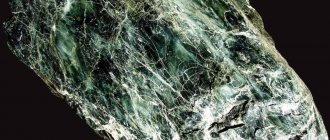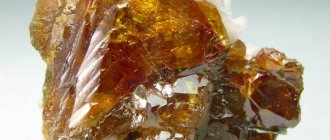/ List of stones / Properties of the mineral magnesite
0
2203
Article rating
The mineral magnesite belongs to the group of carbonates. It got its name from the Greek region of Magnesia, where it was discovered. There is a synonym - magnesium spar.
Properties of the mineral magnesite
History and description of the stone
This mineral was first discovered by the ancient Greeks in Magnesia, a coastal part of the historical region of Thessaly, on the coast of the Aegean Sea. Already in ancient times, different types of magnesite were used to produce refractory bricks necessary for the smelting of metals. The mineral was also used in jewelry.
There are 2 types of magnesite stone depending on its origin:
- crystalline, shiny, transparent;
- amorphous, similar in appearance to marble, but less durable (comparable to porcelain), matte.
The first was formed as a result of the interaction of igneous rocks with hot fresh and salt waters in the Paleozoic and Precambrian eras. The second - later as a result of chemical weathering.
The main color is white (due to magnesium in the formula). Impurities of iron, calcium, manganese, nickel, and cobalt give the mineral yellow, pink, cream, brown, and greenish shades.
Application of the mineral
Magnesite is a fairly common rock. The diversity of its types is explained by the large number of impurities that make up the stone. It also provides a wide range of industries in which magnesite is used.
The main industrial sector in which magnesite is actively used is ferrous metallurgy.
Metallurgical magnesite is the main material in the manufacture of magnesite products. In production it is often replaced with caustic.
Due to its properties, this type of ore is the basis for the production of refractory materials.
Rubber and plastics are synthesized from magnesite, heat-insulating materials and even fertilizers are produced.
Magnesite is used in the pulp and chemical industries. This mineral is also used in the manufacture of building materials. Magnesite slabs are fundamentally new. These are flat sheets that consist of several layers. Thanks to high-tech processing of magnesite ore, scientists were able to obtain magnesite cement, which has a fairly high strength. And thanks to its fire resistance property, this material has become indispensable in construction.
Decorative specimens of stone attract jewelry craftsmen.
Samples of bright yellow, pink and blue shades deserve special attention. The most popular in the jewelry industry are necklaces, chokers and earrings made from shiny magnesite stone.
The ores of this mineral are also used in medicine.
The healing effect of the stone on the nervous system is confirmed not only by traditional medicine, but also by official medicine. Magnesite has a calming effect, positively influencing the human nervous system.
The effect of the mineral on vision has also been proven. Magnesite can relieve eye fatigue and normalize intraocular pressure. It is also used to prevent eye diseases and gradually improve vision.
However, seers believe that magnesite can protect a person from trouble and illness, but not cure it.
Place of Birth
The largest deposits of magnesite are located in Russia. The world's largest deposit for industrial needs is Savinskoye in the Irkutsk region. Industrial development is carried out in the Volga region, Krasnoyarsk region, the Far East and the Urals. In the Satka deposits of the Chelyabinsk region there are not only industrial designs, but also crystalline ones used for jewelry purposes.
In addition to our country, magnesite is mined in:
- Greece;
- Poland,
- North Korea,
- USA,
- India,
- Australia,
- China,
- Austria,
- Czech Republic,
- Canada,
- Brazil.
Price
The stone is considered ornamental, which is why the price of even foreign raw materials is low (rubles):
- tumbling (10-35 mm; Zimbabwe) – 80 – 170;
- beads – 800 – 900;
- ring (jewelry alloy) – 600 – 700;
- egg (45x60 mm) – 4,300.
Jewelry with Magnesite Products
made from silver or complemented with other gems are more expensive.
Magic properties
Most stones used in the form of jewelry are endowed with magical qualities by people. These properties are also attributed to magnesite. It is believed that wearing an amulet made from this stone:
- It will boost your immunity and protect you from epidemics.
- Calms your nerves.
- Improves vision.
- Will teach the owner to communicate with animals, train them, and understand their language.
- Makes children calm and obedient.
- Will help you find a life partner.
- Improves relationships with relatives.
- Builds relationships in the work team (put a pyramid, prism or cube on the desktop).
- Will protect you from accidents and natural disasters on the way.
- Will open the abilities of clairvoyance and clairvoyance.
- Will reveal the talents of creative people, especially artists.
Properties and photos of magnesite
Magnesite crystal. © Rob Lavinsky
The luster of granular varieties is glassy, while dense varieties are matte. Hardness 4-4.5. Specific gravity 2.9-3.1 g/cm3. The color of granular varieties is grayish-white, yellowish, while that of dense varieties is white, cream, yellowish, brown, gray. The line is white. Crystalline magnesite has perfect cleavage in three directions along the faces of the rhombohedron. The fracture in granular varieties is grainy, while in dense varieties it is uneven. Marble-like masses composed of elongated grains (different from marble and dolomite), and dense porcelain-like formations, rarely crystals, in the form of rhombohedrons. The crystals are usually ingrown. Trigonal syngony. The mineral forms aggregates of irregular grains, often so small that the mineral has a porcelain-like appearance.
Features . Magnesite is characterized by a non-metallic luster, medium hardness and boiling of magnesite powder under the action of heated hydrochloric acid. This is how magnesite differs from similar minerals - calcite, dolomite. It differs from siderite in color. Marble has isometric grains, while magnesite has elongated grains.
Chemical properties . The powder boils when exposed to heated hydrochloric acid.
Medicinal properties
Magnesium carbonate is included in a number of medications that help with exacerbations of diseases of the gastrointestinal tract: gastritis, stomach and duodenal ulcers, constipation.
Pure magnesium is obtained from the mineral, which is used to create vitamins containing this trace element.
Natural magnesite stones are used for massage for arthrosis, arthritis, radiculitis, and other diseases of the musculoskeletal system.
Athletes rub powdered magnesia (a mixture of magnesium carbonate and bicarbonate) on equipment in gymnastics and weightlifting to avoid injuries and falls.
How to distinguish a fake?
The mineral is mainly used for making jewelry, which has no value in jewelry. The exception is varieties of magnesite in the form of precious crystals. Sometimes imitation red coral, turquoise and lapis lazuli are made from the mineral by dyeing.
For example, turquoise was imitated from magnesite; in order to distinguish the original from the fake on your own, this requires a microscope. There are recommendations that will help you avoid the trap of scammers.
It is better to buy natural stones in specialized stores. To ensure the originality of the mineral, a certificate is requested to prove the authenticity of the gem.
Magnesite colors
For jewelry, talismans and amulets, matte and transparent crystals of white, yellow, pink, green colors with a glass sheen are used.
Yellow stones are mined in deposits in Australia, pink ones with opal particles are mined in France, large stones of a beautiful brown hue are mined in Brazil.
Where is it used?
The processed stone, in the form of caustic magnesia, has found application in practical industries:
- metallurgy;
- pulp production;
- production of viscose, rubber, plastics, glass;
- creation of thermal insulation materials, refractories, ceramics;
- as a component of construction cement;
- in agriculture it is used as fertilizer.
The best samples (of which there are not many) are taken by stone cutters and jewelry makers. Large companies are not interested in it because it is cheap; hand-made masters create entire sets.
Compatibility with zodiac signs
In astrology, it is believed that the magnesite stone protects the zodiac sign of Gemini. It protects against spontaneous decisions and losses, helps to tame excess excitement, and attracts good luck in games and business.
It helps Virgos and Capricorns to hear the voice of the heart, activate the work of the brain, and enable luck in career and business.
Important information
This mineral is contraindicated for Aries and Aquarius: it will lead them to depression with loss of interest in surrounding events or a nervous breakdown.
For other signs this stone is neutral. They can use it based on its magical properties.
Variety
White magnesite is more common and is mined in many deposits. The mineral can also be pink, brown, gray or yellow, it all depends on the impurities included in its composition. If the iron content predominates, the stone looks brownish, or may be a rich yellow color.
This mineral accepts dye well, which is why magnesite beads painted in various colors are very often found on sale. After this, the stone retains its healing and magical properties. Jewelry with multi-colored minerals is very popular among gem connoisseurs. Ornamental stone used to decorate the facades of houses is usually left in its natural color in the design of the room.
Stone care
This mineral is quite fragile, therefore, along with the general rules applied to the care of all stones, there are special conditions for magnesite:
- It must be removed when doing housework or playing sports;
- Clean only with gentle products, ideally specially purchased at a jewelry store, or use warm soapy water and a soft cloth;
- Do not drop or hit products made from this mineral;
- Store in individual boxes covered with velvet fabric, avoid proximity to durable stones.
Use of magnesite slabs in construction
Magnesite slabs serve as finishing materials for:
- wall cladding from the inside and outside;
- installation of ceilings, floors, partitions between rooms;
- manufacturing fences;
- installation of a soft roof;
- finishing of swimming pools, baths, bathrooms;
- furniture assembly;
- making banners and billboards;
- arrangement of hotel complexes, schools, etc.
Magnesite slabs have excellent technical qualities. The most important advantage is that they allow you to carry out repairs without “wet” finishing processes.
Magnesite slabs are distinguished by their hygiene, radiation safety, fire resistance and good sound insulation. Due to their resistance to moisture, they can be used in finishing bathrooms, swimming pools, etc.
The slabs are easy to process. They can be cut with a hacksaw or knife, drilled, fastened with screws or nails. The slabs can be coated with any paint, tiles, wallpaper, etc. can be glued to them.
Installation of magnesite slabs does not require any special skills. They are mounted either on a metal or wooden frame. Fastening is usually done using self-tapping screws. Since the slabs are attached to the frame, there is space between them and the wall. This provides additional thermal insulation of the room.
If desired, the boards can be attached directly to the wall using glue. In this simple way you can easily level the surface.
The only drawback of magnesite slabs is that if they are small in thickness, they are particularly fragile.
Magnesite plate and possibilities of its use
Composition of magnesite plate
Methods of application
Origin and location
Magnesite, compared to calcite, is much less common in nature, but is sometimes found in large continuous masses of industrial interest. Some of these accumulations are formed hydrothermally. First of all, this should include very large deposits of crystalline granular masses of magnesite, spatially associated with dolomites and dolomitized limestones. As geological studies show, these deposits are formed metasomatically (among the deposits it was sometimes possible to identify relics of limestone fauna). It is assumed that magnesia could be leached and deposited in the form of magnesite by hot alkaline solutions from dolomitized strata of sedimentary origin. Typical hydrothermal minerals are occasionally found in paragenesis with magnesite: calcite, aragonite, dolomite, barite, talc, chlorite, quartz, pyrite, chalcopyrite, sphalerite, fahlores, etc.
Another type of hydrothermal deposits, also sometimes of practical importance, is associated with the impact of hydrotherms rich in carbon dioxide on massifs of ultramafic magnesian igneous rocks: serpentinites, peridotites, etc. Deposits of fine-crystalline magnesite in the form of lenses, veins, nests and a dense network of veinlets are usually confined to cracks and zones discharges. In the form of inclusions, calcite, dolomite, ankerite, talc, chalcedony, quartz, magnetite, hematite, etc. are observed. The formation of magnesite could occur according to the following scheme:
Mg6[Si4O10][OH]8 + 6CO2 → MgCO3 + 4SiO2 + H2O
The free silica formed in this case is obviously carried away mainly by alkaline waters. Opal, chalcedony and quartz are usually observed in relatively insignificant quantities in the magnesium mass itself.
Accumulations of cryptocrystalline (“amorphous”) magnesite also arise during weathering processes of massifs of ultramafic rocks, especially in cases where intense weathering results in the formation of a thick crust of destruction products. During the process of oxidation and hydrolysis, magnesium silicates undergo complete destruction under the influence of surface water and air carbon dioxide. The sparingly soluble iron hydroxides that arise accumulate at the surface. Magnesia in the form of bicarbonate, as well as released silica in the form of sols, sink into the lower horizons of the weathering crust. In this case, blurred zones of neoplasms may appear, gradually transforming into each other. Magnesite , often enriched in opal and dolomite, is deposited in the form of veinlets and accumulations of sinter forms in highly leached fractured porous serpentinites in the zone of stagnant groundwater.
Finally, finds of magnesite with hydromagnesite, for the most part of mineralogical significance, are observed among sedimentary salt-bearing deposits. The formation of magnesium carbonates is associated with the reaction of exchange decomposition of magnesium sulfate with Na2CO3. Magnesite is also found in gypsum-bearing sedimentary strata.
Magnesite. Granular aggregate
Talismans and amulets
Magnesite can act as a talisman or amulet, protecting its owner and giving him strength to overcome dangers. The talisman is recommended to be carried with them at all times by people whose lives involve traveling - travelers, drivers and sailors. The stone also protects its owner from lurking dangers in the form of natural disasters and violent acts.
Amulets made of magnesite are placed around the neck of a child so that he finds peace and becomes obedient.
Magnesite slabs
Magnesite slabs are a fundamentally new building material made on the basis of magnesite. They are made in the form of sheets 3-12 mm thick. They are produced in lengths of 1.83-2.44 m and widths of 0.9-1.22 m.
Magnesite plate includes several layers:
- external;
- fiberglass mesh, which provides good stability and strength;
- filler;
- fiberglass reinforcing layer;
- filler on the inside.
The filler is a composite material, which is made by mixing magnesium oxides and chlorides, silicates, organic fibers, plasticizers, etc.
